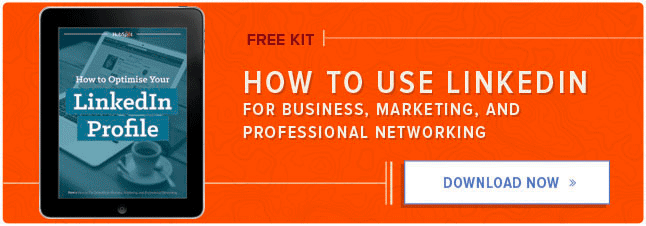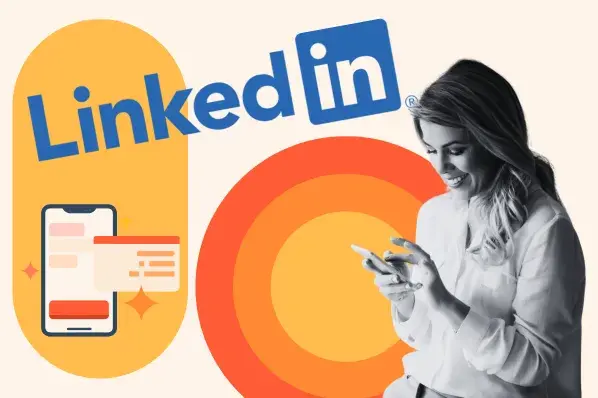Just because HubSpot values humility doesn’t mean we’re not a competitive bunch. Three months ago, CEO Brian Halligan, Marketing VP Kipp Bodnar, and I bantered about our relative rank on LinkedIn’s “Most-Viewed Members at HubSpot” list. At #17, I -- predictably -- brought up the rear.
Mercifully, Kipp helped me cobble together a plan for climbing the ranks. We started by comparing our dashboards and performing a quick gap analysis to get a better sense of the opportunities I was missing. LinkedIn’s handy 90-day “charts” feature (found on the “Who’s viewed your profile” page) made it easy understand the sources (e.g., LinkedIn Search, People Similar to You) and keywords (e.g., Job description, Skills) that drive profile traffic.
Quickly I discovered that there were three “clogged paths” to my profile.
- People Similar to You: Kipp was generating 3x as many profile views from people similar to him than I was generating from profiles similar to mine.
- Skills: Over the past 90 days, not one person had found my profile via my Skills. None. Zippo.
- Keywords: Keywords that led visitors to Kipp’s profile were 250% more diverse than mine. In other words, if someone searched for a profile containing a particular term, it was 2.5x more likely that the term led to Kipp’s profile than to mine.
This entire process took only a few minutes -- again, thanks to LinkedIn’s remarkable work in data science.
Download our complete LinkedIn guide here for more tips on how to use LinkedIn for professional networking.
Next up, I took action. I did this quickly. After all, lunch was approaching. (And I was looking for a boast, not a job). So in just under a half-hour, here's what I did.
What I Did to Increase Profile Views
1) Normalized my title.
Time: 1 minute.
When I looked at "People similar to" HubSpot CMO Mike Volpe, I saw a list that was heavily concentrated with CMO titles. Perhaps this is because LinkedIn’s formula weighs title heavily, although I don't know that for sure. In the event that it does, I modified my title from the unconventional “VP of Content” to the slightly more common "VP of Marketing (Content)."
2) Inserted keywords into my Name field.
Time: 1 minute.
Admittedly, it looks a little weird when people do this, but since Keywords was a clogged path to my profile, I figured I would try. I added "Content Marketing & Startups" after my name, surfacing those keywords to the highest level of my profile.
Correction: A LinkedIn rep and a commenter were kind enough to point out that this technique isn't exactly consistent with LinkedIn's User Agreement. At HubSpot we like to "move fast and break things." Looks like I broke this one. Don't do it.
3) Added keywords to my Professional Headline.
Time: 2 minutes.
I’d previously listed my current employer and the names of the companies I advise in the headline that appears directly beneath my name. But to optimize for keywords, I replaced the company names with the functions I perform, specifically, “Content Marketing Leader, B2B Blogger, Marketing Speaker, Startup Advisor."
4) Optimized my Summary.
Time: 10 minutes.
I’d been bungling the Summary section of my profile. Before this exercise, my Summary contained a list of awards I’d earned. But who's searching for awards on LinkedIn? Nobody. So I spent a little time and re-wrote this section as a keyword-dense narrative, broken into sections for readability. (I then moved the list of awards to the actual Awards section.)
5) Expanded my Skills entries.
Time: 3 minutes.
I hadn’t updated the Skills section to keep pace with my career. I gave this section a thorough refresh, hitting LinkedIn’s 50 skill limit.
6) Syndicated blog posts.
Time: 7 minutes.
I syndicated one blog post I’d written for HubSpot (basically just copied/pasted body and added a brief, “This post originally appeared on …” introduction). Over time, I syndicated two more.
7) Changed Profile Viewing Setting from 'Anonymous' to 'Public.'
Time: 1 minute.
This is so minor it’s almost trivial, but to facilitate reciprocal visits, now when I visit a profile, that member can see that it was me who visited them. Maybe some will visit me in return.
8) Added my LinkedIn account to my email signature & Twitter profile.
Time: 2 minutes.
Another minor change, but a few minors can add up to a major. Note Facebook doesn't include a field for LinkedIn profile URL. (Or if it does, I couldn't find it.)
While I was in profile clean-up mode, I edited descriptions of past jobs to adhere to the action/results format, which is generally considered a best practice. I also put in examples of my work by adding SlideShares and links to publications to current and previous jobs. But these changes were general enhancements, not made to optimize for visits, so I'm not adding the time to our clock.
The Results
Given the minor time investment of just under half an hour, I wasn’t sure what sort of results I could expect. After all, it wasn’t like I had a major event to announce, like a job change, promotion, or graduation. I basically was trying to nip and tuck my way to more views. Well, it turns out a little nipping and tucking can make as big of an impact on LinkedIn as it can in Hollywood. Let’s have a look.
In the 90 days prior to the optimization project (image below), my profile had been viewed 759 times. Most of the visits (56) were made by salespeople, presumably to sell me something. If I were looking for a job, I wouldn’t consider these to be high value visitors.

Following the exercise, my profile received 956 views over the same span of time (there’s a slight date overlap in the study), an increase of more than 25%:

Moreover, the profile of visitors rebalanced from salespeople to executives (50 viewers had a CEO or Executive Director title). If I were searching for a job, I would consider these visitors to be immensely valuable. Looking at the date label on the chart below, it’s clear that views hit a low during the holiday season, suggesting that the overall growth would have been even greater had the test been run during a different time of year.
Zooming in a little closer, we can see that Kipp and I were able to move the right levers in my profile:

Visits from Skills increased from 0 to 37. Additionally, 14% of people found my profile via “People similar to you." Finally, keyword diversity was achieved: 953 different keywords led a viewer to my profile, resulting in 177 viewers discovering me via LinkedIn search.
Of course, if you are an active job seeker, this exercise may not be enough to land you your dream gig. But LinkedIn is a hotbed of connections for recruiting, social selling, business development and, of course, content sharing and discovery. The more traffic your profile gets, the better chance you have of creating a flywheel effect for the messages you want to spread.
And to make your LinkedIn profile even moreappealing to potential employers, become a certified inbound marketing professional with HubSpot's free marketing certification. Get started here.
LinkedIn Marketing









![How to Write a LinkedIn Recommendation [Quick Tip + Examples]](https://53.fs1.hubspotusercontent-na1.net/hubfs/53/write-linkedin-recommendation.png)

